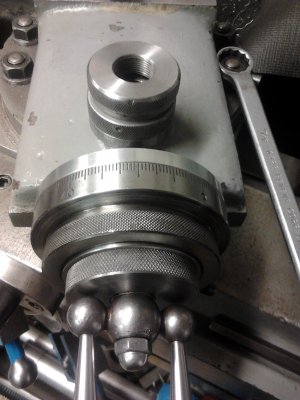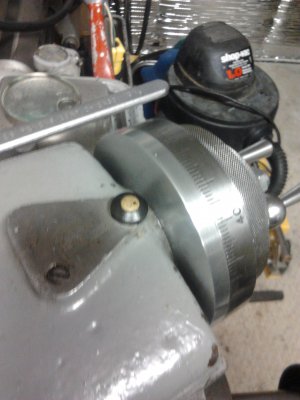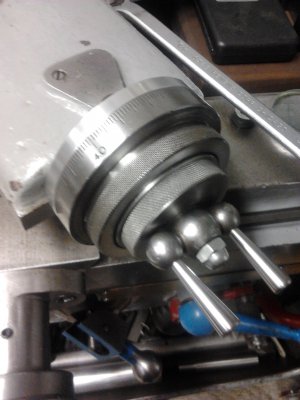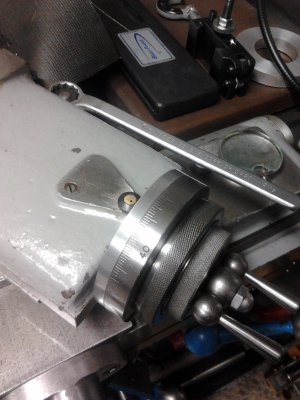- Joined
- Dec 1, 2010
- Messages
- 1,172
The pics show the stock dial sitting on the compound. The factory dial was to small, and all the grads were getting impossible to read.
The replacement dial is 200 grads per rev, so now it will read direct, .005 in on the dial, and .005 off the work piece.
The Dial was in good shape, and only needed the centre hub machined down to fit the Sidney compound. A very easy boring job, and that's done. Then the outer knurled lock collar was made, and finally the disk for the back side of the dial. The disk is aluminum, as that's all I had kickin around, and I still have to scribe the zero mark. it attaches with a set screw in the bottom at 6 o clock.
The dial install worked out well, and nothing on the original compound was altered at all. The original dial can be re installed in a matter of 2 mins. This is a big improvement over the original dial, and with 200 grads it direct reading. Just a small project done over the weekend.




The replacement dial is 200 grads per rev, so now it will read direct, .005 in on the dial, and .005 off the work piece.
The Dial was in good shape, and only needed the centre hub machined down to fit the Sidney compound. A very easy boring job, and that's done. Then the outer knurled lock collar was made, and finally the disk for the back side of the dial. The disk is aluminum, as that's all I had kickin around, and I still have to scribe the zero mark. it attaches with a set screw in the bottom at 6 o clock.
The dial install worked out well, and nothing on the original compound was altered at all. The original dial can be re installed in a matter of 2 mins. This is a big improvement over the original dial, and with 200 grads it direct reading. Just a small project done over the weekend.





